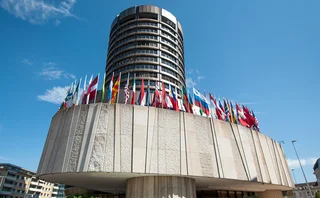

Four in five EU banks quizzed on credit risks in 2020
Covid panic exposed cracks in banks' credit models
European authorities sent recommendations on solving credit risk issues to 80% of banks in 2020, up from less than 50% the year before, clearly indicating where supervisors’ concerns lie in the wake of the coronavirus crisis.
Asks related to credit risk made up one-quarter of all qualitative recommendations sent to 112 banks directly supervised by the European Central Bank, compared with 17% in 2019. Almost two-thirds of these 2019 recommendations are yet to be taken up by banks, in part
Only users who have a paid subscription or are part of a corporate subscription are able to print or copy content.
To access these options, along with all other subscription benefits, please contact info@risk.net or view our subscription options here: http://subscriptions.risk.net/subscribe
You are currently unable to print this content. Please contact info@risk.net to find out more.
You are currently unable to copy this content. Please contact info@risk.net to find out more.
Copyright Infopro Digital Limited. All rights reserved.
As outlined in our terms and conditions, https://www.infopro-digital.com/terms-and-conditions/subscriptions/ (point 2.4), printing is limited to a single copy.
If you would like to purchase additional rights please email info@risk.net
Copyright Infopro Digital Limited. All rights reserved.
You may share this content using our article tools. As outlined in our terms and conditions, https://www.infopro-digital.com/terms-and-conditions/subscriptions/ (clause 2.4), an Authorised User may only make one copy of the materials for their own personal use. You must also comply with the restrictions in clause 2.5.
If you would like to purchase additional rights please email info@risk.net
More on Risk Quantum
Junk-rated CDS clearing rates slid in H1 2024
Shift away from CCPs concentrated in sub-investment grade multi-name products
Default and credit spread risks drive Canadian banks’ FRTB charges
New Basel III disclosures give first glimpse into market risk mix after internal models retirement
SGX suffered five-hour op failure from CrowdStrike outage
First major service disruption at CCP’s Central Depository service in nine years
RBC’s CVA risk charges swell 42% in first year under FRTB
Bloating RWAs contrast with declines at peers employing new standardised approach
Margin breaches skyrocket at JSCC amid market volatility
August turmoil led to record initial margin shortfalls at six clearing divisions
Global banks boost Level 3 assets to new highs
European lenders and UBS-Credit Suisse merger fuelled rise in hard-to-value instruments in 2023
Record share of OTC trades eschews interdealer, CCP channels
More than one-fourth of global notional involves a single dealer and is not cleared, BIS data shows
EU IMA users maintain edge in keeping risk charges compressed
Aggregate market RWAs increased slower in 12 months to June than at banks using SA only







